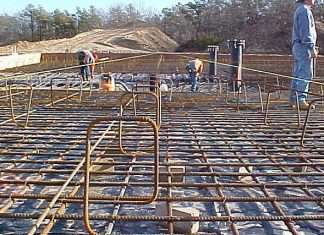Is your kitchen consistently hotter than the rest of your home? Many kitchens suffer from poor ventilation and heat buildup from appliances. HVAC professionals confirm that with a few simple fixes, you can make a noticeable difference. Here’s how to cool down your kitchen, fast.
Зміст
The Problem: Why Is Your Kitchen Always Hot?
Kitchens are prone to overheating due to the concentration of heat-generating appliances (stoves, ovens, dishwashers) and often inadequate ventilation. Even when appliances aren’t in use, poor airflow can trap heat and humidity, making the space uncomfortable.
1. Maximize Ventilation with Your Range Hood
The most effective solution is a powerful range hood that vents outside. Many hoods simply recirculate air, which does little to remove heat.
“A strong range hood venting to the exterior is the best fix. If yours recirculates, it’s just blowing warm air back into the room,” says Danny Pen, HVAC Pro and President of New Era Plumbing & HVAC.
Ensure filters are clean and the hood is grease-free for optimal performance.
2. Open Windows for Cross-Ventilation
If your range hood isn’t sufficient, or you lack one, opening windows is the next best step.
“Get hot, moist air out as fast as you make it. If you don’t have a venting range hood, open a nearby window,” Pen advises.
Creating cross-ventilation (opening two windows or a window and a door) amplifies the cooling effect.
3. Portable Air Conditioning: A Quick Fix
For immediate relief, a portable air conditioner or evaporative cooler can make a significant difference.
“Installing a window AC unit is simple enough for many people and quite effective,” says TJ Laury, HVAC Pro and President of Ben’s ProServ.
Even a makeshift evaporative cooler (a fan with ice in front) can lower temperatures.
4. Window or Ceiling Fans for Airflow
A window fan positioned to exhaust hot air can dramatically improve ventilation. Ceiling fans can either direct airflow down for cooling or reverse direction to pull heat upwards.
“If you can’t upgrade the range hood, add a simple window exhaust fan near your stove, and you’ll feel the difference right away,” Pen suggests.
5. Appliance Repositioning: Minimize Heat Transfer
Poor appliance placement can contribute to overheating.
“If your refrigerator and oven are right next to each other, try to reposition them so they are apart,” Laury says.
Separating heat-generating appliances reduces localized temperature spikes.
6. Reduce Oven and Stove Usage
The oven and stovetop are major heat sources. Opting for smaller appliances (air fryer, toaster oven) or incorporating no-cook meals reduces overall heat output.
7. Block Direct Sunlight: Prevent Heat Gain
Direct sunlight through windows adds significant heat. Blackout curtains, reflective window film, or even aluminum foil can block solar heat gain.
“You might be surprised how much heat comes in through glass windows,” Laury notes.
8. Cook Outdoors When Possible
Grilling or smoking outdoors eliminates kitchen heat altogether. Modern grills often have side burners for pots and pans, expanding cooking options.
9. Use a Portable Dehumidifier: Combat Humidity
Steam from cooking, kettles, and dishwashers increases humidity, making the kitchen feel warmer. A portable dehumidifier removes excess moisture, providing noticeable cooling.
“A small portable dehumidifier in the kitchen while cooking can make the air feel several degrees cooler without touching the thermostat,” Pen confirms.
10. Invest in Energy-Efficient Appliances
When replacing appliances, choose energy-efficient models that generate less heat and consume less energy. This is a long-term solution that reduces overall kitchen temperatures.
Conclusion: Cooling down your kitchen doesn’t require expensive renovations. Simple fixes like improving ventilation, reducing heat sources, and managing humidity can make a substantial difference. By implementing these strategies, you can create a more comfortable and functional cooking space





























